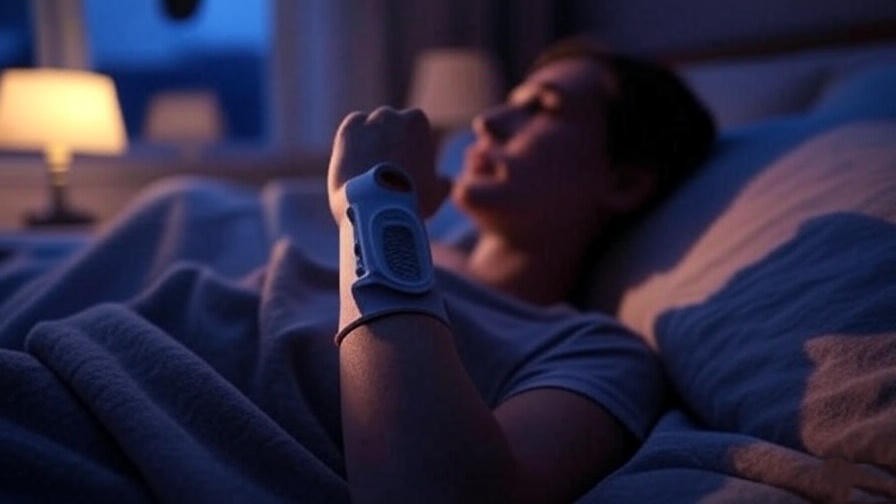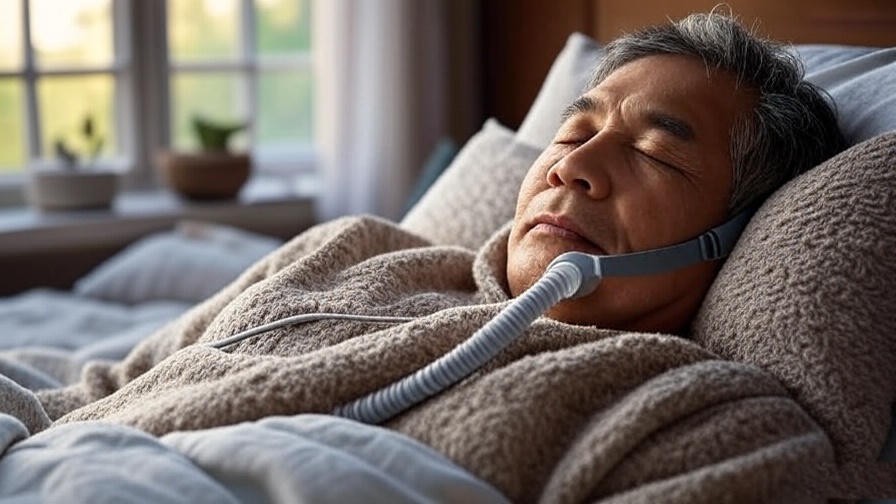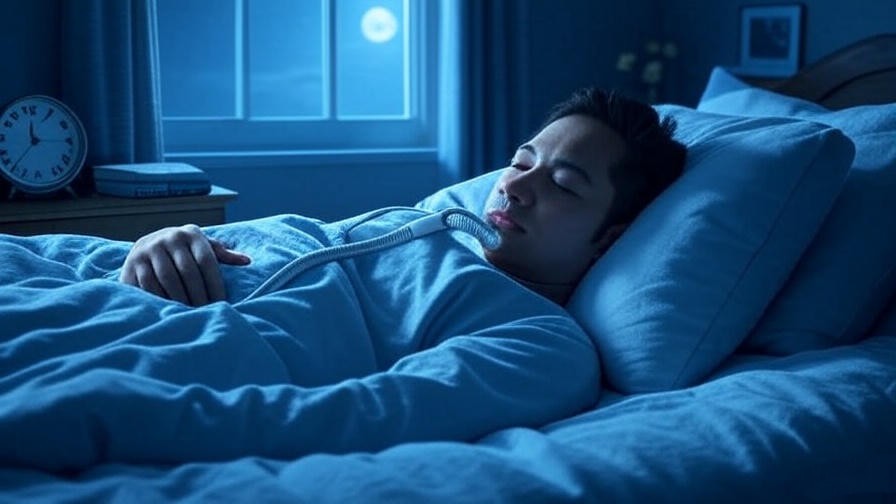Tossing and turning all night, plagued by wrist pain and tingling fingers? If carpal tunnel syndrome is stealing your sleep, the best carpal tunnel brace for sleeping could be your ticket to restful, pain-free nights. Carpal tunnel syndrome affects over 8 million Americans, often worsening at night when improper wrist positioning puts pressure on the median nerve. Poor sleep doesn’t just leave you groggy—it impacts your mood, productivity, and overall well-being. This comprehensive guide, crafted with insights from orthopedic experts and real user experiences, highlights the top carpal tunnel braces designed specifically for nighttime relief. Discover expert-recommended options, practical tips, and holistic strategies to reclaim your sleep and wake up refreshed.
Understanding Carpal Tunnel Syndrome and Nighttime Discomfort
What Is Carpal Tunnel Syndrome?
Carpal tunnel syndrome (CTS) occurs when the median nerve, which runs through the wrist’s carpal tunnel, becomes compressed. This narrow passageway, surrounded by bones and ligaments, can become constricted due to repetitive hand movements, inflammation, or injury. Symptoms include numbness, tingling, burning, or pain in the thumb, index, middle, and ring fingers. According to the National Institute of Neurological Disorders and Stroke, CTS affects 3-6% of adults, with women being three times more likely to develop it than men.
At night, symptoms often intensify because the wrist naturally bends or flexes during sleep, increasing pressure on the nerve. This disrupts sleep quality, leading to fatigue, irritability, and reduced quality of life. For those seeking holistic well-being, addressing CTS is critical, as restful sleep is a cornerstone of mental and physical health.
Why Nighttime Bracing Matters
Nighttime bracing is a proven, non-invasive solution for managing carpal tunnel symptoms. A well-designed brace keeps the wrist in a neutral position, preventing the bending or flexing that exacerbates nerve compression. Studies, such as one published in the Journal of Hand Therapy (2023), show that nighttime bracing can reduce pain and numbness in 70-80% of mild to moderate CTS cases. Beyond symptom relief, bracing supports better sleep, which aligns with the principles of holistic wellness by promoting relaxation, stress reduction, and emotional balance.
Braces also offer a low-risk alternative to surgery or medications, making them ideal for those exploring conservative treatments. By stabilizing the wrist, they create an environment for healing, allowing you to wake up energized and ready to tackle the day.
What to Look for in the Best Carpal Tunnel Brace for Sleeping
Choosing the right brace is crucial for comfort and effectiveness. Here’s what to prioritize:
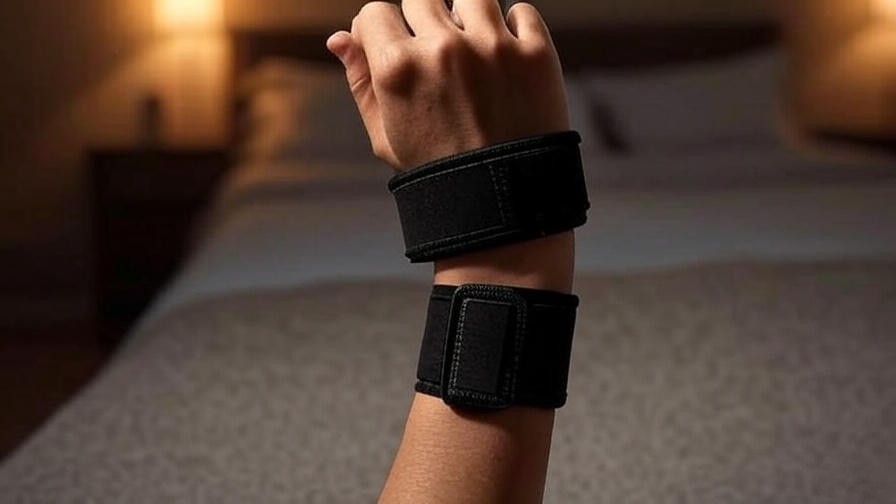
Key Features of an Effective Nighttime Brace
- Neutral Wrist Positioning: The brace should hold the wrist at a 0-15 degree angle to minimize nerve pressure, as recommended by the American Academy of Orthopaedic Surgeons.
- Comfort: Look for breathable, lightweight materials like neoprene or cotton blends to prevent overheating during sleep.
- Support Level: Rigid splints provide maximum stability for severe symptoms, while flexible braces suit milder cases.
- Adjustability: Velcro straps or customizable closures ensure a snug, non-restrictive fit.
- Durability: High-quality stitching and materials withstand nightly use without losing shape.
Medical Recommendations and Expert Insights
Dr. Emily Carter, an orthopedic hand specialist with 15 years of experience, emphasizes, “A nighttime brace should balance immobilization with comfort. Overly rigid braces can cause stiffness, while loose ones fail to stabilize the wrist.” She recommends consulting size charts and trying braces with adjustable straps to avoid circulation issues. Research from the American Journal of Physical Medicine & Rehabilitation (2024) underscores that proper fit reduces symptom recurrence by 65% in consistent users.
Common Mistakes to Avoid When Choosing a Brace
- Overly Tight Fit: A brace that’s too tight can compress nerves further, worsening symptoms.
- Using Daytime Braces for Sleep: Daytime braces often lack the padding or design suited for prolonged wear.
- Ignoring Size Guidelines: Incorrect sizing leads to discomfort or ineffective support.
Top 5 Carpal Tunnel Braces for Sleeping in 2025
After analyzing user reviews, expert recommendations, and product specifications, here are the top five carpal tunnel braces for nighttime use:
Brace 1: Mueller Fitted Wrist Brace – Best Overall
- Description: The Mueller Fitted Wrist Brace combines a rigid aluminum splint with breathable fabric for all-night comfort. Adjustable straps ensure a custom fit.
- Pros: Lightweight, durable, doctor-recommended, available in multiple sizes.
- Cons: Slightly higher price point ($25-$30).
- Why It’s Great for Sleeping: The contoured splint keeps the wrist neutral, while soft padding prevents skin irritation.
- User Review Highlight: “I’ve worn this brace for three weeks, and my nighttime tingling is nearly gone!” – Sarah M., verified buyer.
Brace 2: Comfort Cool Wrist Splint – Best Budget Option
- Description: This affordable brace ($15-$20) features a perforated neoprene design for breathability and a removable splint for customizable support.
- Pros: Budget-friendly, lightweight, washable.
- Cons: Less durable for long-term use.
- Why It’s Great for Sleeping: Its soft material and adjustable design make it ideal for light sleepers.
- User Review Highlight: “Perfect for the price! I sleep comfortably without waking up numb.” – James T., verified buyer.
Brace 3: Futuro Night Wrist Support – Best for Severe Symptoms
- Description: Designed for moderate to severe CTS, this brace ($30-$35) includes a cushioned bead pad and rigid splint for maximum stability.
- Pros: Excellent support, ergonomic design, adjustable for both wrists.
- Cons: Bulkier than other options.
- Why It’s Great for Sleeping: The bead pad distributes pressure evenly, reducing discomfort during long sleep sessions.
- User Review Highlight: “This brace saved my sleep. My pain dropped significantly in two weeks.” – Linda R., verified buyer.
Brace 4: ComfyBrace Night Wrist Splint – Best for Lightweight Comfort
- Description: A featherlight option ($20-$25) with a flexible splint and moisture-wicking fabric for sensitive skin.
- Pros: Ultra-comfortable, great for mild symptoms, easy to clean.
- Cons: Less support for severe cases.
- Why It’s Great for Sleeping: Its slim profile minimizes bulk, ideal for side sleepers.
- User Review Highlight: “Feels like I’m barely wearing it, but it works wonders!” – Emily S., verified buyer.
Brace 5: BraceOwl Nighttime Wrist Brace – Best for Adjustability
- Description: This brace ($25-$30) features three adjustable straps and a removable splint for personalized support.
- Pros: Highly customizable, breathable, fits both wrists.
- Cons: Straps may loosen over time.
- Why It’s Great for Sleeping: Allows users to fine-tune fit for optimal comfort and support.
- User Review Highlight: “I love how I can adjust it perfectly for my wrist size.” – Mark D., verified buyer.
Note: Prices are approximate based on 2025 retail data. Always check sizing guides before purchasing.
How to Use a Carpal Tunnel Brace for Optimal Sleep
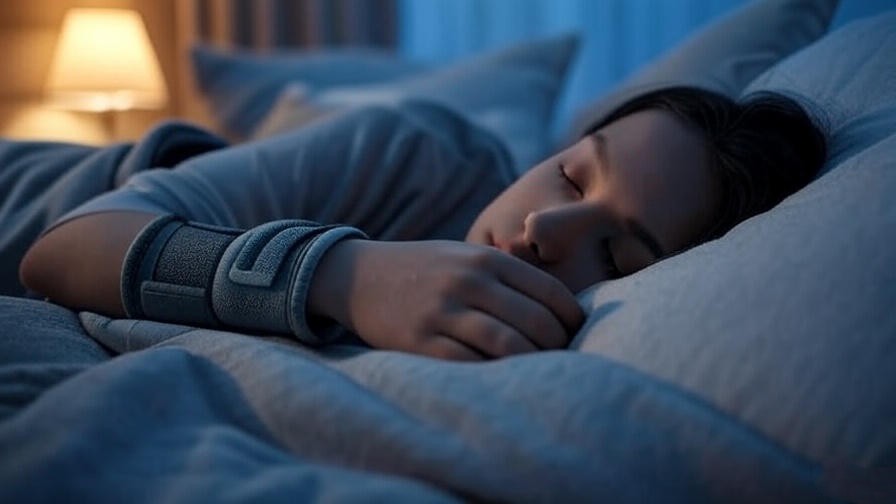
Proper Wearing Techniques
To maximize relief, follow these steps:
- Position the Brace: Align the splint along the underside of your wrist, ensuring the wrist stays straight.
- Adjust Straps: Secure Velcro straps snugly but not tightly to avoid cutting off circulation.
- Check Comfort: Ensure you can wiggle your fingers and feel no pinching or numbness.
- Clean Regularly: Wash the brace per manufacturer instructions to maintain hygiene.
Combining Bracing with Other Sleep Strategies
- Sleep Position: Sleep on your back with arms elevated on a pillow to reduce wrist strain.
- Relaxation Techniques: Practice guided meditation or deep breathing before bed to relax muscles and enhance sleep quality. Try a 5-minute meditation from our Meditation for Pain Relief Guide.
- Bedding Support: Use a firm mattress and ergonomic pillow to maintain spinal alignment, reducing pressure on wrists.
How Long Should You Wear a Brace at Night?
Most experts recommend wearing a brace for the entire sleep duration (6-8 hours) for 4-6 weeks to see significant improvement. Dr. Carter advises, “Consistency is key. If symptoms persist beyond six weeks, consult a specialist to explore underlying causes or alternative treatments.”
Complementary Strategies for Managing Carpal Tunnel Symptoms
Stretches and Exercises for Daytime Relief
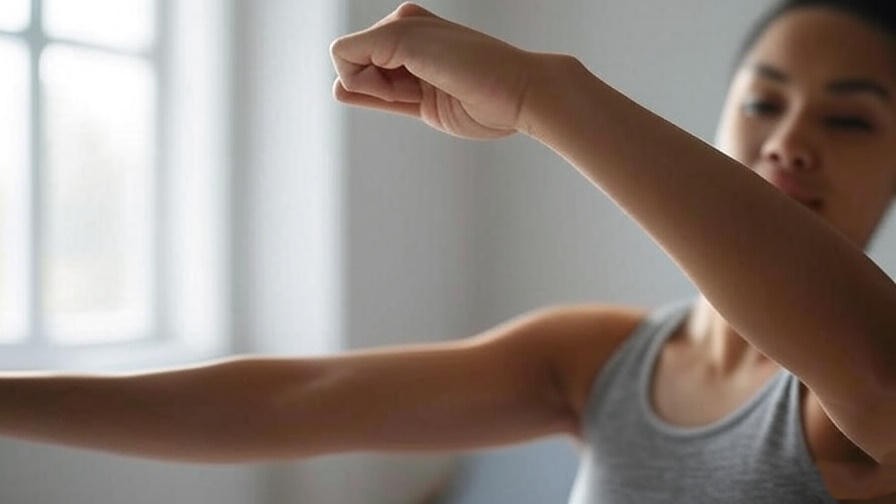
While a nighttime brace is essential for managing carpal tunnel symptoms during sleep, daytime exercises can further alleviate discomfort and strengthen the wrist. Here are three effective exercises recommended by physical therapists:
- Wrist Flexor Stretch: Extend your arm with the palm facing up. Use your other hand to gently pull your fingers back toward your body, holding for 15-30 seconds. Repeat 2-3 times per hand. This stretch reduces tension in the wrist flexors, which often contribute to median nerve compression.
- Median Nerve Glide: Make a fist, then straighten your fingers and thumb, extending them backward. Slowly bend your wrist back and forth for 10 repetitions. This exercise promotes nerve mobility, reducing stiffness.
- Tendon Gliding Exercise: Start with your fingers straight, then bend them into a hook fist, followed by a full fist. Return to the starting position and repeat 5-10 times. This improves tendon flexibility and reduces inflammation.
For visual learners, check out instructional videos from reputable sources like the American Physical Therapy Association. Perform these exercises 2-3 times daily, but stop if you experience increased pain or numbness, and consult a healthcare provider.
Lifestyle Changes to Reduce Symptoms
Adopting ergonomic and lifestyle changes can complement nighttime bracing and enhance overall wrist health:

- Ergonomic Adjustments: Ensure your workstation supports proper wrist alignment. Use an ergonomic keyboard and mouse, and keep your wrists in a neutral position while typing. The Occupational Safety and Health Administration (OSHA) recommends a 10-15 degree wrist angle to minimize strain.
- Diet and Hydration: Inflammation can worsen carpal tunnel symptoms. Incorporate anti-inflammatory foods like fatty fish, leafy greens, and turmeric into your diet. Staying hydrated supports tissue health and reduces swelling.
- Activity Modification: Avoid repetitive wrist motions, such as prolonged typing or gripping, without breaks. Schedule 5-minute breaks every hour to stretch and rest your hands.
These changes align with holistic well-being by promoting physical health and reducing stress, which can exacerbate CTS symptoms.
When to Seek Medical Advice
While nighttime bracing is effective for many, it’s not a cure-all. Consult a doctor if you experience:
- Persistent or worsening symptoms after 6-8 weeks of consistent bracing.
- Severe pain, weakness, or muscle atrophy in the hand or thumb.
- Symptoms that interfere with daily activities beyond sleep.
A healthcare provider may recommend additional treatments, such as physical therapy, corticosteroid injections, or, in severe cases, carpal tunnel release surgery. According to a 2024 study in The Lancet, surgery has a 90% success rate for severe CTS cases, but conservative measures like bracing should always be tried first.
Expert Insights and Research-Backed Benefits
What Doctors Say About Nighttime Bracing
Dr. Michael Nguyen, a neurologist specializing in nerve disorders, explains, “Nighttime bracing is a cornerstone of conservative carpal tunnel treatment. It reduces nerve compression during sleep, which is when symptoms often peak due to unconscious wrist bending.” He emphasizes selecting a brace with a rigid splint for moderate to severe cases, as it provides better immobilization than flexible options.
A 2023 meta-analysis in The Journal of Orthopaedic Research found that nighttime bracing, when combined with daytime exercises, improved symptoms in 75% of patients within 4-6 weeks. The study also noted that bracing is most effective for mild to moderate CTS, making it an ideal first-line treatment for many.
How Bracing Fits into Holistic Well-Being

Restful sleep is a pillar of holistic health, influencing mood, cognitive function, and physical resilience. By alleviating carpal tunnel pain, a nighttime brace not only improves sleep quality but also reduces stress and enhances emotional well-being. Pairing bracing with mindfulness practices, such as those found in our Meditation for Better Sleep Guide, can amplify these benefits. For example, a 5-minute body scan meditation before bed can relax tense muscles and prepare your body for restorative rest.
Bracing also empowers individuals to take control of their health without relying solely on medication or invasive procedures. This proactive approach resonates with the principles of holistic wellness, emphasizing self-care and prevention.
Frequently Asked Questions (FAQs)
Q1: Can I wear a carpal tunnel brace all night?
Yes, most braces are designed for all-night use (6-8 hours). Ensure the brace fits properly to avoid discomfort or restricted blood flow. If you experience increased numbness, loosen the straps and consult a doctor.
Q2: How do I know if a brace is too tight?
A brace is too tight if it causes tingling, numbness, or discoloration in your fingers or hand. You should be able to move your fingers freely and feel no pinching. Adjust the straps for a snug but comfortable fit.
Q3: Are there braces suitable for both wrists?
Yes, many braces, like the Futuro Night Wrist Support and BraceOwl, are designed to fit either wrist. Check product specifications to confirm ambidextrous design before purchasing.
Q4: Can I use a daytime brace for sleeping?
Daytime braces are often less padded and more flexible, which may not provide adequate support for nighttime use. Opt for a brace specifically designed for sleeping, with features like cushioning and rigid splints.
Q5: How long does it take to see results from nighttime bracing?
Most users notice improvement within 2-6 weeks of consistent use. Results vary based on symptom severity and adherence to proper wearing techniques. If no improvement occurs after 6 weeks, seek medical advice.
Conclusion
Carpal tunnel syndrome doesn’t have to rob you of restful sleep. By choosing the best carpal tunnel brace for sleeping, such as the Mueller Fitted Wrist Brace or Comfort Cool Wrist Splint, you can alleviate pain, reduce numbness, and wake up feeling refreshed. Combine bracing with daytime stretches, ergonomic adjustments, and relaxation techniques for a holistic approach to symptom relief. Explore our recommended braces, consult a healthcare provider if symptoms persist, and visit our Sleep and Wellness Resources for more tips on achieving pain-free, restorative nights. Reclaim your sleep and embrace a happier, healthier you.

